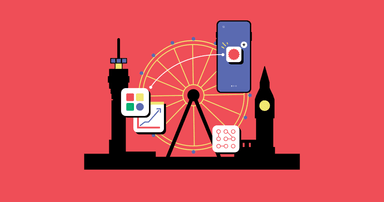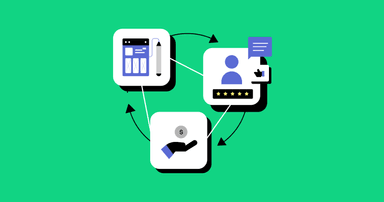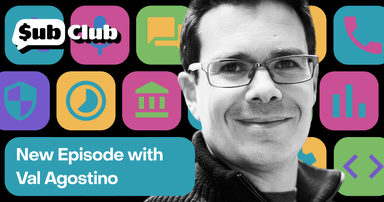How to increase trial conversion rates without adding new features
Focus on how you sell and your audience, not just what you're selling.
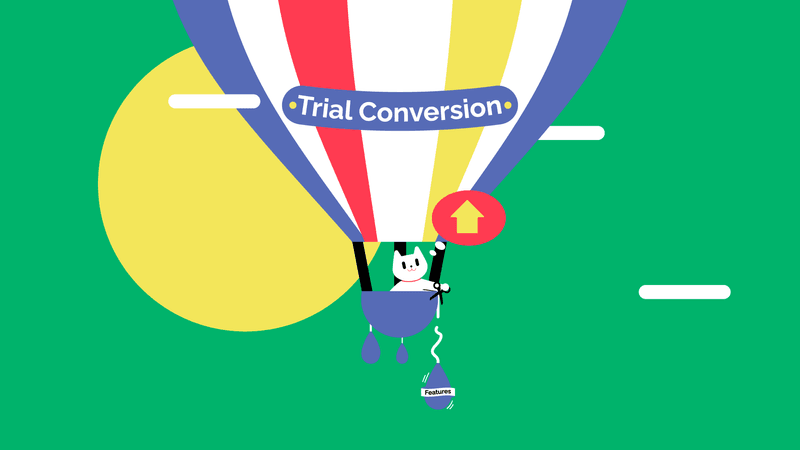

Marcus Burke
As an independent consultant, Marcus helps subscription apps unlock Meta as their primary growth channel. He’s been in the industry for over a decade and has a background in both gaming and consumer tech (Forge of Empires, Blinkist, Tandem…). You’ll find him on LinkedIn sharing practical advice on Meta Ads, Web2App, optimizing paywalls, and improving user onboarding.
The two main metrics that every subscription app obsesses about are trial start rate and trial-to-paid conversion.
While trial starts can be tracked on a channel level to a good extent, even under SKAN, trial-to-paid is a different beast.
Since ATT was introduced, down-funnel conversion of cohorts is an aggregate of channels and audiences. As a consequence, developers often overlook the effects that user acquisition has on these metrics.
I’ve heard product teams tell me over and over: “we need to work on our feature set, so users get more value out of their trial”.
Yet from my experience, it’s often not about the feature-set you’re selling but rather how you sell it and to whom.
Let’s dive in.
Levers influencing trial-to-paid
When trying to tackle low trial conversion, your area of attack is very broad. Anything from your marketing messaging to product experience can make or break the metric. So what are the levers that will have an effect?
From my experience, it’s the following:
- Marketing channel
- Algorithm used
- Audience
- Creative and messaging
- Targeting
- Store presence
- App onboarding
- Paywall design
- Pricing
- Trial experience
When creating experiment hypotheses, you want to keep in mind that trial start rate and conversion are inherently interconnected. Few changes will only affect one of the two.
If you, for example, introduce a hard paywall, you will easily drive up trial start rate, yet see the opposite effect on trial conversion as users are forced to start a trial, bringing in cohorts that might be hard to please.
Especially in the early days when resources are scarce, you want to find levers that are low effort and high impact. As a rule of thumb, complexity grows as you’re moving deeper into the funnel.
Therefore, it’s crucial to understand how simple tweaks to user acquisition or onboarding can make a serious impact on your business.
The impact of channel and traffic source
If your app has been around for a while and you’ve already started investing into marketing you probably noticed a significant shift in your blended metrics.
Your first “golden cohorts” came with beautiful product metrics when compared to benchmarks e.g. from the RevenueCat State of Subscription Apps report. Yet once paid users were added to the mix, things looked very different.
The same behavior applies not only to organic vs. paid but also across marketing channels. The user intent coming from Meta vs. TikTok vs. Google etc. varies massively. How come?
Different channels host different audiences (more on that in the next section). They show ads in different moments and have different targeting tools at hand.
Search inserts an ad in a moment of need, indicating high intent.
Discovery channels like Meta or TikTok can place your product more frequently as users browse their feeds, yet the moment is random resulting in lower intent.
Meta has a stronger data backbone and, as a consequence, targeting algorithm compared to TikTok.
All of these variables will influence trial conversion. A widely adopted tool to evaluate the difference: a “Where did you hear about us?” survey.
Asking users in onboarding where they came from allows you to ingest data samples into your product data for the respective channels. Don’t expect everyone to answer correctly. Also don’t expect volumes to match the actual traffic input from a given channel. But knowing that users who answered “TikTok” have 50% lower trial conversion than “Facebook” is worth gold to inform your actions.
From here you you can build a basic model that informs cost-per-trial goals for the respective channels. 50% stronger down-funnel numbers mean you can spend double the money on these users.
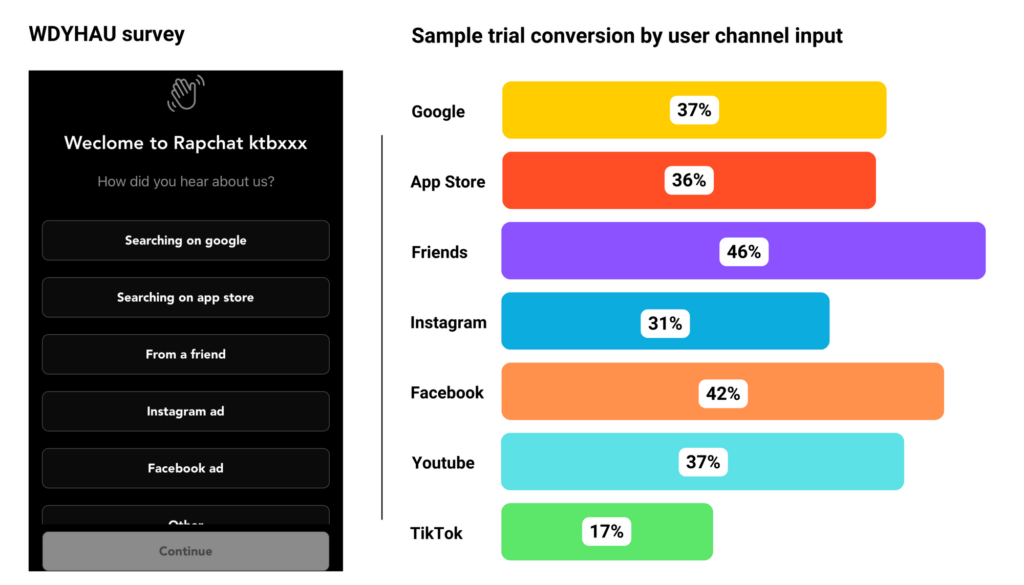
The impact of audience and demographics
My parents aren’t on TikTok. (In their rare case they actually never made it onto any social media). Point is: the marketing channel you’re using needs to match your target audience.
Yes, you’re an app company and want to gain global dominance by targeting anyone on the globe over the age of 18. But let me tell you: mastering one audience before going broad is key to pay the bills.
Usually the simplest audience to start with is older than you’d think. 35-44 is where I see the sweet spot of strong purchase power, good usage of social media (your discovery channels) and okay CPMs (cost-per-thousand impressions).
While young users tend to be cheapest and have great conversion rates to install and to trial, their trial conversion is mostly subpar (to say the least.)
How to get this data? Just like asking users where they came from, you can ask them for their age (and gender) in order to feed your predictive model. Many ad channels report CPIs (cost-per-installs) and cost-per-trial on an age and gender basis. Knowing the respective trial-to-paid for these age groups allows you to steer user acquisition and eliminate audiences that drain budget.
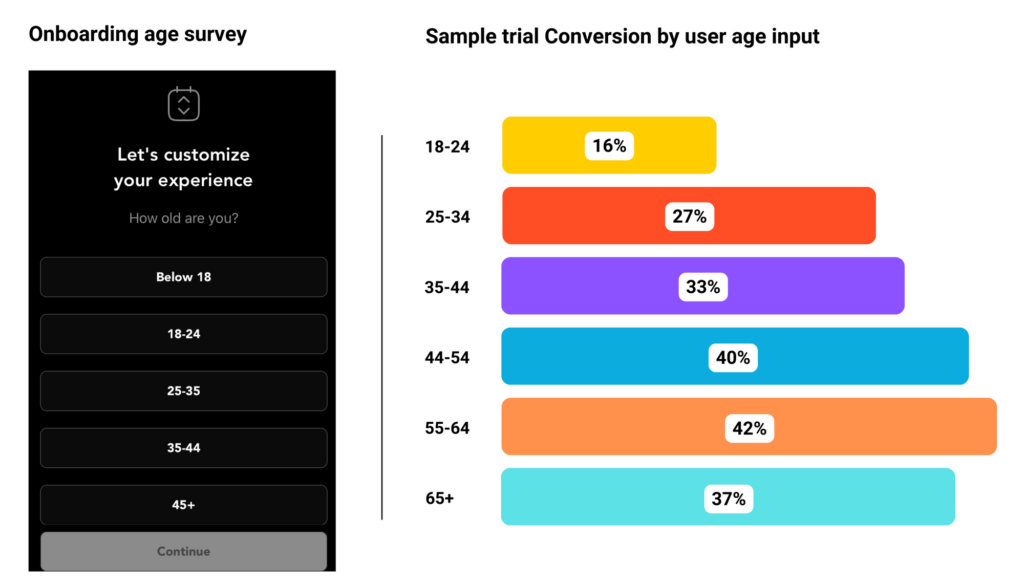
The impact of ad creatives
The nature of an ad creative directly influences who the ad targets. As a consequence, different ads will have very different trial-to-paid conversion.
Let’s look two examples: ad #1 is piece of user-generated content, and it’s mainly running on TikTok or Instagram Reels, the homes of vertical short-form video.
These placements are used by younger audiences, as we’ve discussed above. Additionally, the video features a young creator talking about her pain points and how the app helps her solve them.
The result: great upper funnel metrics, lots of engagement, cheap prices and low costs per trial. But will it convert?
Ad #2 is a content-focused banner ad with a timely angle. It targets a more mature, tech-interested and news-savvy audience, and it does so via the Facebook and Instagram feeds. The age targeting behind this ad most likely skews older and towards higher income.
Make sure you evaluate ad performance on audience and placement. An advanced tactic you can apply to gain additional visibility on how different angles perform is asking users for their goal in onboarding.
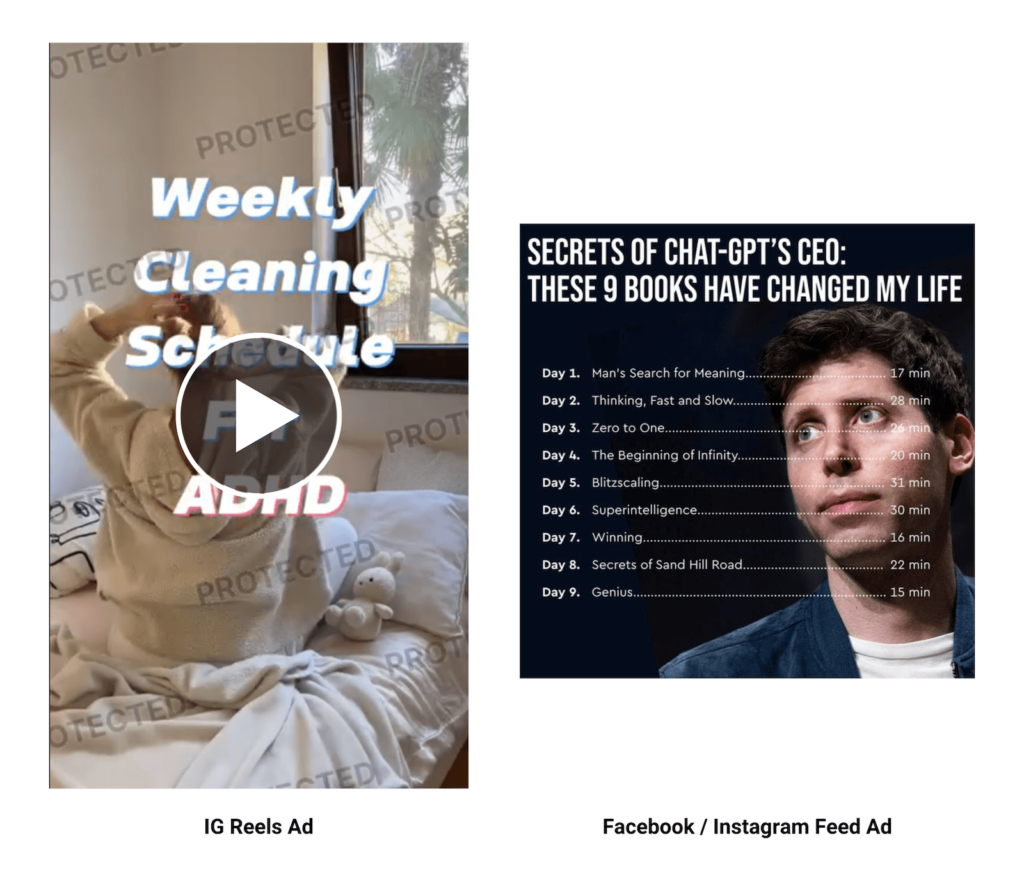
The impact of onboarding
Onboardings have been getting longer and longer. And for a good reason. You’re not done selling when a user downloads your app.
Your onboarding is your sales pitch leading up to the paywall. When north of 80% of trials happen on d0, you want to make good use of it. The state of mind that users are in when presented with your subscription products can make massive differences in trial start and conversion rates.
When I worked at Blinkist we tested the popular ethical paywall design created by Jaycee Day. We not only saw a significant bump in trial opt-in rate but also a nice drop in trial cancellations (-4%).
It shows you the power of building trust and how you lead users into their trial.
Now your WDYHAU survey and other questions aren’t necessarily a great sales pitch. Neither are push opt-in, ATT and other requests. They’re all draining your users psych (see user psych framework).
It’s your job to ensure that people aren’t bored by the time they hit your paywall. You want to nurture them and build intent.
Developers have been innovating in this space, exploiting cognitive biases to make users ready to buy:
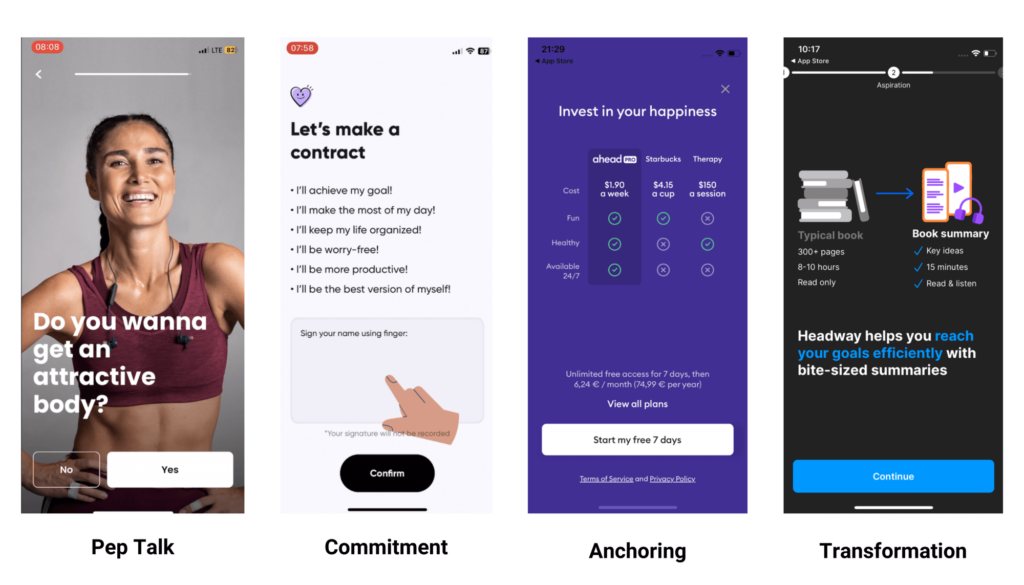
The impact of paywall and price
We’re finally there and asking for payment. Like all other levers discussed, your paywall will not only affect trial start but also trial conversion.
The two main directions developers take with their paywalls are longform vs. shortform. There’s a ton of chatter around longform being a secret weapon yet in the end that’s just a consequence of adding a longer sales pitch.
You can easily do the same using previous screens, making it hard to distinguish where onboarding ends and where paywall starts. My POV: I’d rather use separate screens than a scrollable one as it allows me to control and test which information users consume in which order. Additionally, it keeps cognitive load low.
No matter what you go for (don’t just trust me but test it), your trial metrics will be hugely impacted by the price you set.
Low pricing creates high trial start rates and conversion. The more you raise them, the more both drop.
High prices disqualify audiences with low purchasing power and set certain expectations.
Your goal is to find the sweet spot that maximizes average revenue per user, where the perceived value of your app is higher than what you ask for.
Another root cause for poor down-funnel conversion can be poor paywall design. If you’re vague about the features and benefits of your app, users might be missing the education they need to convert.
In the end, starting a trial to explore the app is a totally different thing than starting a trial to solve a specific problem with a specific feature.
📺 Learn more about paywall design in our Roast My Paywall: Live! series.
Conclusion
There’s a ton of high impact levers at the top of the funnel. Tackling them usually needs fewer resources and the beauty of a funnel is that more users see the work you do at the top.
From my experience, you can run a profitable business with just one functioning core feature.
In gaming, new products are actually soft launched with little gameplay beyond d7. Validate your business case with a strong core feature and nail how you market and onboard users first.
It will put you ahead of most other products out there.
Key takeaways
- Focus on marketing and onboarding over features: Instead of adding features, optimize low effort high impact levers such as your marketing channels, ad creatives, and the onboarding experience.
- Understand your audience: It’s critical to match your marketing efforts with the right demographic. Knowing which channels and demographics convert best allows for more targeted and cost-effective user acquisition strategies.
- Experiment with paywall design and pricing: The design of the paywall and the pricing strategy are key. Testing different approaches can help identify what works best for encouraging trial starts and conversions without overwhelming potential customers.
- Leverage data from user interactions: Collecting data through surveys during onboarding, like the “Where did you hear about us?” survey, provides valuable insights that can fine-tune marketing strategies and budget allocation.
- Simple changes can have big impacts: Often, small adjustments in how you market and onboard users can significantly affect trial-to-paid conversion rates. Prioritize these changes over more complex feature developments, especially when resources are limited.
In-App Subscriptions Made Easy
See why thousands of the world's tops apps use RevenueCat to power in-app purchases, analyze subscription data, and grow revenue on iOS, Android, and the web.
